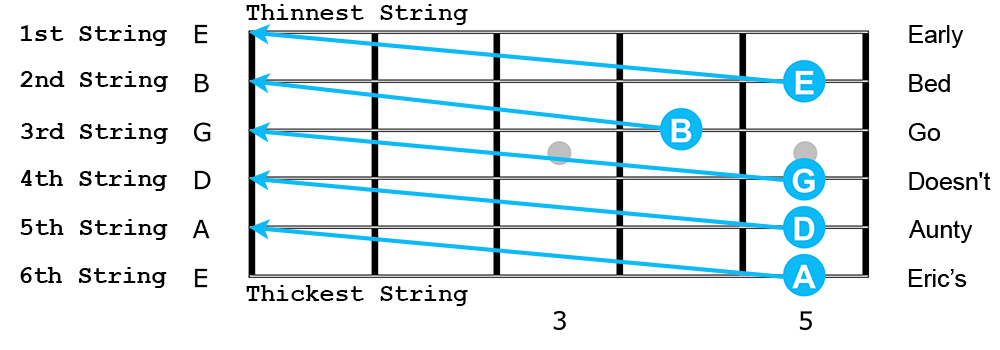Want to make some noise now? Head straight to part 2, but make sure you come back to the theory part soon!
Part 1
Theory
This is the music theory bit. The best way to progress on a musical instrument is to get a good grasp of music theory.
Understanding guitar tuning
The open or unfretted strings on a guitar produce the notes (low to high or thickest string to thinnest) E A D G B E. Rhymes are often used to help remember tuning. Eric’s Aunty Doesn’t Go Bed Early! This helps a lot of people remember the tuning notes and may just help you too.

As long as you get one string tuned correctly you can tune a guitar in to it-self. The guitar tuning diagram shows you how to do this. If the 6th/thick E string is tuned correctly, you can place your finger on the 5th fret and it will produce an A note. This is the exact note and pitch that the 5th/A string should be tuned to. This process repeats on all strings but notice that you have to place your finger on the 4th fret on the 3rd string.
We recommend buying an electronic guitar tuner to all students, you can pick one up very cheap and it really does help when you first start tuning your guitar.
Over time you will learn to hear pitch much better, but when you first start, make it as easy as possible for yourself. Alternatively if you are confident at recognizing pitched notes you could tune to a piano, tuning fork or anything that produces a note.
Video 3 - Tuning The Guitar
When you strike the bottom string (thickest) on an in tune guitar it will produce the note of E which is great, but how do you produce other notes from the E string? You’d need to use the chromatic order.